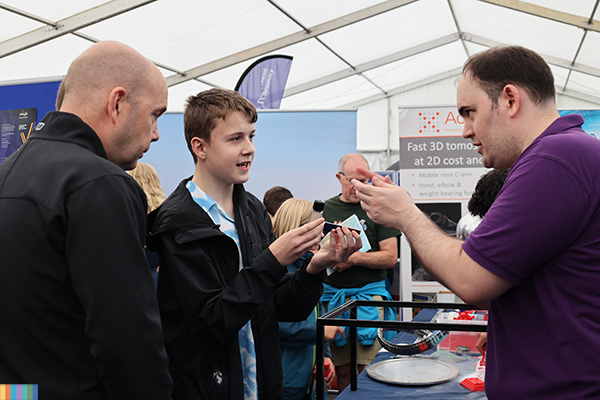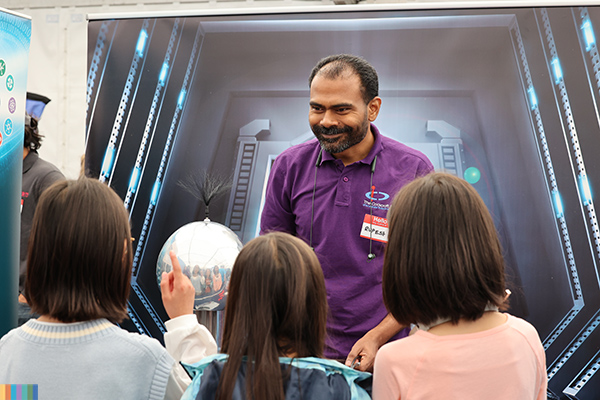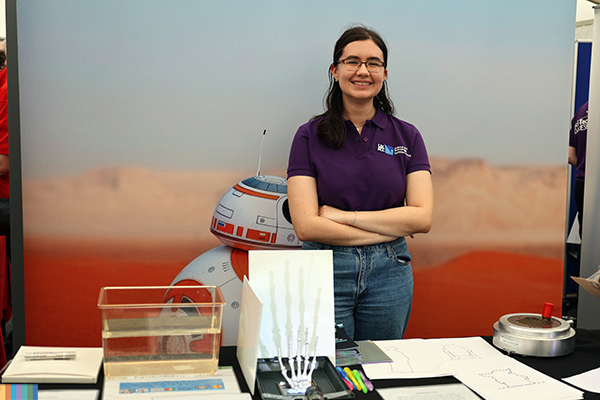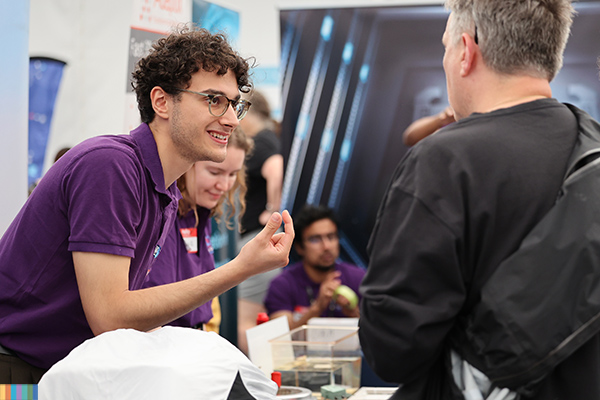LIV.INNO students present research to the public at Daresbury Open Week

An Open Week for the public and for groups of schoolchildren has taken place at Daresbury Laboratory, where some of the students in the LIV.INNO CDT are based as part of the Cockcroft Institute. The Open Week ran from 10-15 July and attracted visitors from around the North West region and beyond. A total of 1500 schoolchildren visited the site over two days at the beginning of the week and over 5,000 members of the public visited the site for the Public Open Day on the Saturday.
LIV.INNO students presented the work they have been doing as part of the PhDs using ideas which they first developed in the LIV.INNO skills school in April. Many of them presented alongside the University of Liverpool’s QUASAR Group on a stand titled ‘The Physics of Star Wars’.

The demonstrations were all Star Wars themed.
The LIV.INNO CDT made several contributions to the Open Week. A stand all about medical physics which presented the work which is being done with Adaptix by Lauryn Eley, who is currently undertaking her PhD was on display. Visitors to this stand could find out about how X-rays propagate and how we can use different types of invisible light (such as UV and X-rays) to see things that we cannot ordinarily see.

A stand all about medical physics which presented the work which is being done with Adaptix by Lauryn Eley.
LIV.INNO students were involved in the set up and delivery of several other demonstrations that showed how accelerators work. These included demonstrating the Meissner effect and flux pinning on both a flat track and a 3-D Mobius strip and using a Van de Graaf generator to show how electric charge can make things move. Simple demonstrations of magnets and magnetic fields were available for younger children and a demonstration of how lenses and filters can be used was also on display. Finally, the Surfatron showed how electromagnetic waves can be used to accelerate particles in particle accelerators.

LIV.INNO students delivered several demonstrations that showed how accelerators work.
LIV.INNO students were also involved in presenting the work of the Astrophysics Research Institute, part of Liverpool John Moores University.